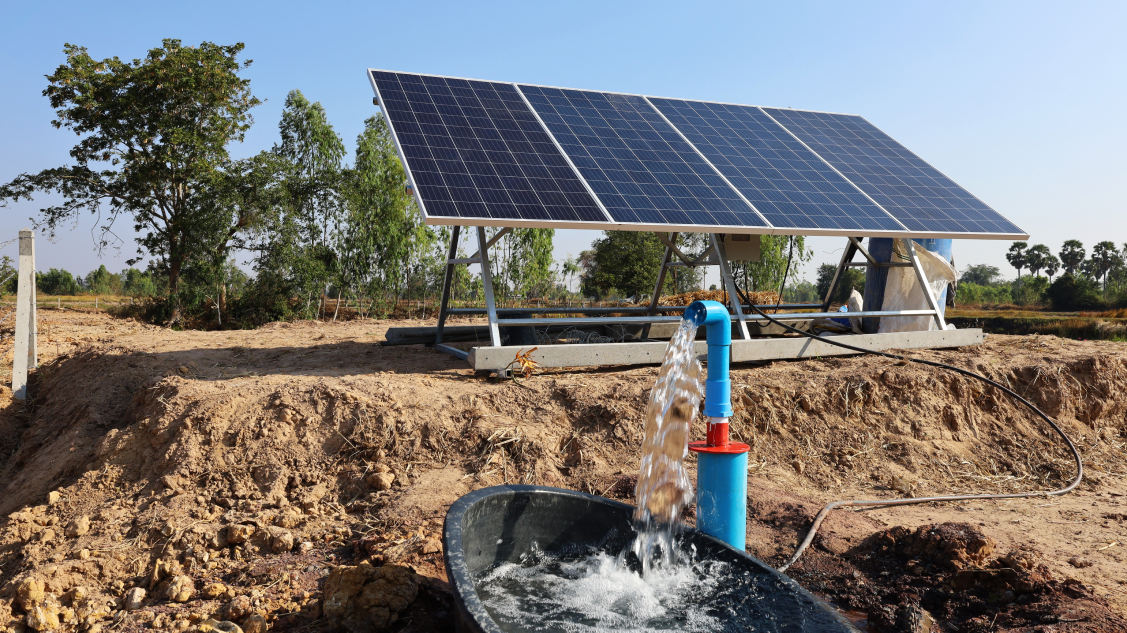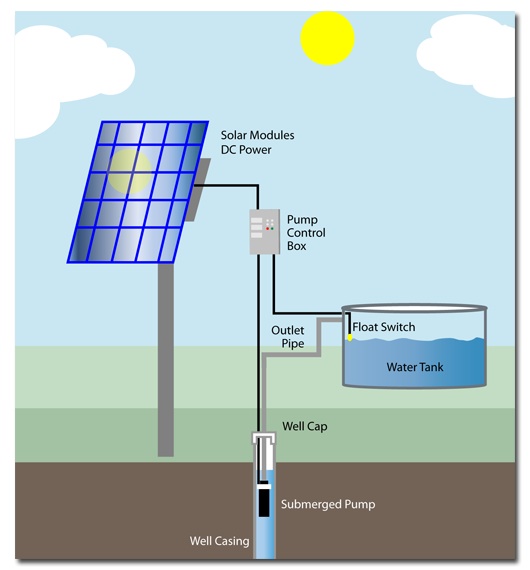
Solar Power Systems for Pumping, Irrigation and Building Ventilation Far from the Power Lines
Between pumping wells and cattle tanks, irrigating crops, watering livestock, ventilating outlying buildings, and warming greenhouses during cold seasons, one typical farm can easily require as much electricity as five single-family houses.
In our home state of West Virginia, the average farm is 445 acres in size. And most, if not all, of that land is too far from the nearest power line to affordably connect to the power grid.
But with off-grid solar installations that connect to the machinery they power, all that acreage can be a big advantage.
Completely Scalable Solar Power for Agricultual Projects
With acres of open land, the size of ground-mounted solar systems is limited by the amount of solar power they need to generate – not by the size of a roof. There’s room to orient them in the direction that maximizes exposure to sunlight and minimizes shade.
On a farm in Washington County, MD, for example, there was plenty of room for us to design, engineer, and build a 186-solar module ground-mount installation producing more than 85,000 kilowatt-hours a year.


Stand-Alone Agricultural Direct Solar Power Installations
Simple construction without charge controllers or batteries makes stand-alone direct solar installations incredibly durable.
Agricultural Direct Solar Installations can easily be scaled down in size as well as up. So in remote areas they can work stand-alone, right next to the pumps, fans, or other machinery they power – without the need for or exorbitant cost of running power lines. And because they’re incredibly simple in construction, with no charge controllers or batteries, they’re even more dependable and maintenance-free than residential, commercial, or municipal solar installations.
Solar for Increased Farm Productivity
Ground-mounted agricultural solar installations can also provide some totally unexpected farming benefits.
Planting pollinator-friendly plants beneath them can create a habitat for bees, butterflies, and other beneficial insects.
Planting low-height plants there can build soils and reduce erosion.
Planting shade-tolerant crops such as lettuce under solar panels keeps them cool during daytime and warmer at night, while extending growing seasons and reducing water requirements.
A 2019 study from the universities of Arizona and Maryland found that crops planted beneath solar panels were 100-300% more productive (depending on species), while shade from the solar modules cut irrigation water use by 15% and water consumption by 157%.
Agricultural solar installations can also generate big savings in another big way:
In addition to the usual solar savings and tax credits, if more than half of your gross revenue comes from farming, we can help you qualify for $2,500 to $500,000 in subsidies from the USDA’s REAP program



